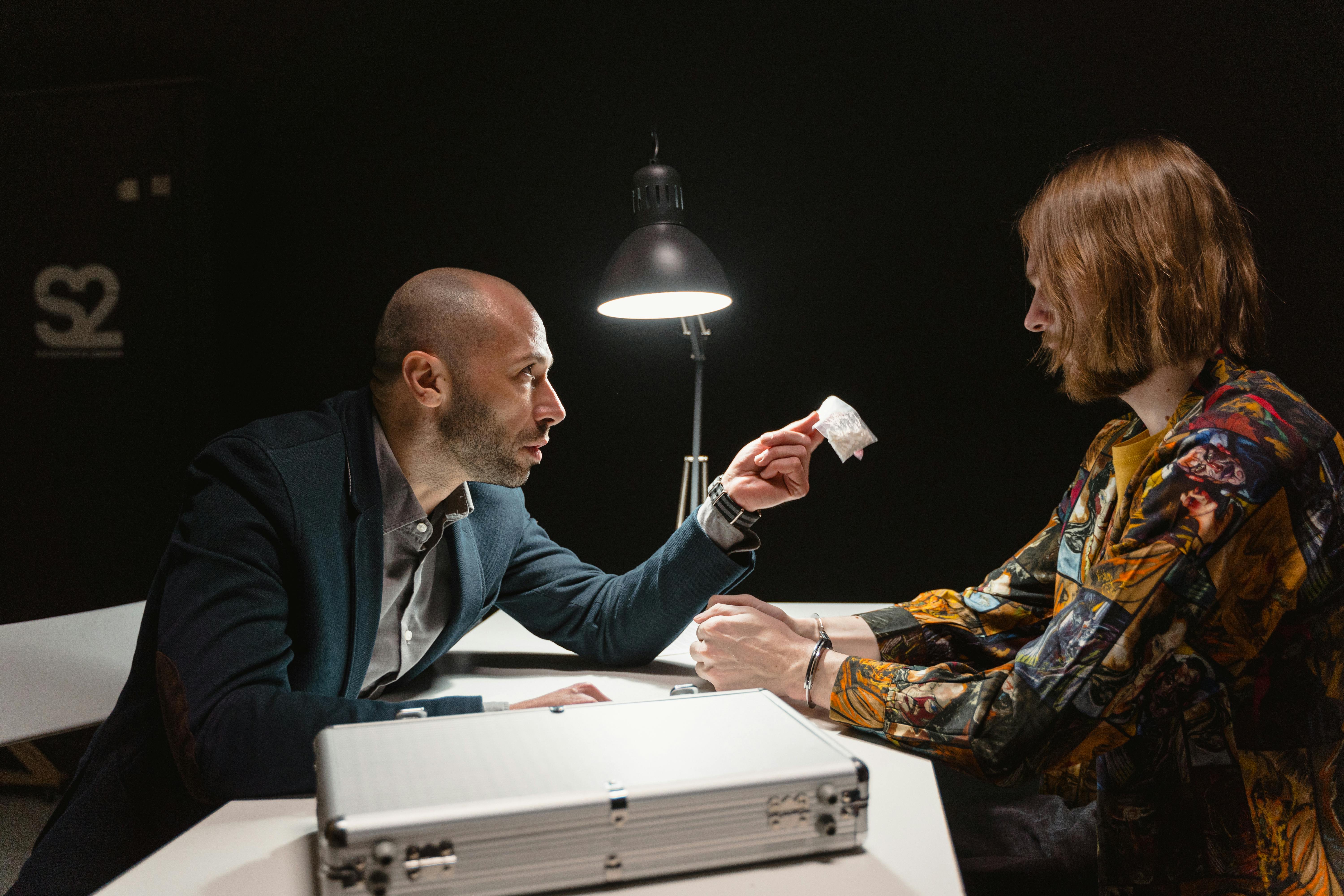As an affiliate, I earn from qualifying purchases, but this doesn't affect the reviews or recommendations—your trust is important to me!
Creating Your Own Lava Lamp Experiment at Home DIY

Today, We're Making:
- - DIY Lava Lamp Experiment
- - Solar System Model: On this date, Mars would be in opposition, meaning it's the perfect time to teach kids about the solar system. Using simple materials like styrofoam balls and paints, kids can create their own models of the solar system and learn about the position and movements of planets.
- - DIY Water Clock: This project relates to learning about the importance of time and calendars. Using simple materials like plastic bottles, straws.
Do you remember the dazzling beauty and hypnotic flow of a mesmerizing lava lamp?
The vibrant colors, the hauntingly slow motion, it's enough to spark curiosity in anyone—particularly in children. But what if you could create the same magic right within your kitchen?
Welcome! In this DIY Lava Lamp Experiment...
We will unveil the mystery behind these ethereal lamps and transform it into a fun, educational DIY project for kids. With a simple water and oil experiment, we will illuminate the science behind this retro piece of decor, turning your home into a mini laboratory.
Let's bring the magic of science to your home with this easy and engaging homemade lava lamp experiment. Get ready to craft, learn, and have fun!
Gather All Necessary Lava Lamp Materials
Before starting your DIY lava lamp experiment, make sure to have all the necessary materials at hand. You will need:
- A clear glass container or jar
- Vegetable oil
- Water
- Food coloring (your choice of color)
- Effervescent tablets (like Alka-Seltzer)
- Flashlight or any light source (optional)
You might already have most of these items in your home, making this a truly simple and convenient DIY home experiment. Now, with all the materials ready, we can dive in to create our own homemade magic!
Assemble Your DIY Lava Lamp Experiment Step-by-Step
First, fill the glass container about two-thirds full with vegetable oil, then fill the rest with water but leave some space at the top. Now, sit back and observe! Kids will love watching the fluids separate. It is a perfect beginning to this engaging home science experiment which provides an excellent, hands-on way to learn science at home.
Once the oil and water have separated, add several drops of food coloring. The fun begins, here! The food coloring is water-based so it will sink and blend with the water below the oil creating an enchanting swirl of color.
In the next step of this DIY lava lamp, we introduce the effervescent tablets, dropping one or two into your mixture. Watch in awe as the colored bubbles start to wiggle their way through the oil, creating the classic lava lamp motion. This stunning visual offers a highlight moment in our lava lamp science project.
If you want an added dash of luminescent magic in your homemade lava lamp, shine a flashlight on it from the bottom. The light bouncing off the swirling blobs of color adds another layer of vibrance to your kitchen science experiment. It mesmerizes children and adults alike!
Dive Deeper into the Lava Lamp Science Project
But why does it all work? Why do the water and oil never mix, and why do the food coloring and the effervescent tablets create such a spectacle? In our DIY educational projects such as this one, it's not only about creating the fun, but also understanding the science behind them.
The simple answer lies in density. Water is denser than oil, so it stays at the bottom. Food coloring is also water-based, so it too sinks and mixes with the water. The effervescent tablets create gas when they dissolve, and the gas bubbles rise to the top carrying some colored water with them. As the gas escapes leaving the colored water behind, gravity pulls the denser water back down, and the cycle repeats, creating this continuous dancing motion that we see in our lava lamps.
Whether a part of your kids' science experiments or just for fun, understanding these principles turns any DIY kids project into an enriching, educational experience.

Discover The Magic of Science At Home!
And there you have it! You've just created an enchanting spectacle of science right in your own kitchen. With a dash of color, a bit of light, and a whole lot of bubbly fun, you've made learning and science-tinkering a blast for both you and your kiddos.
Illuminate the Abstract
In recreating the mesmerizing dance of a lava lamp, you've illuminated the abstract science principles of density and solubility into a tangible, touchable, and absolutely hypnotizing DIY project. And isn't that what DIY and science are all about?
Stirring Curiosity and Sparking Imagination
Stirring curiosity, sparking imagination, and transforming the everyday into extraordinary learning moments. So, keep exploring, keep learning, and keep crafting the magic of science at home. Who knows what wonders you'll create next!

You May Also Like These:
Solar System Model STEM Project
Ingredients:
- Styrofoam balls in different sizes: these will represent the planets. For more accurate sizes, refer to a size table of the planets
- Watercolors or Acrylic Paint: for painting planets
- Brushes: for painting
- Wooden dowel rods: for hanging the planets
- String: to hang the planets on rods
- Fishing Line: to hang the model (invisible from distance)
- Glue: to paste the string on the balls
Instructions:
- Paint the styrofoam balls: Paint each ball to represent a planet: Mercury, Venus, Earth, Mars, Jupiter, Saturn, Uranus, and Neptune. Allow the paint to dry completely.
- Attach the string to each planet: Cut a length of string for each planet. Apply a small amount of glue to one end of the string and press it into the styrofoam ball. Allow the glue to dry.
- Arrange your planets: Based on distance from the Sun (which you can represent with a larger, yellow styrofoam ball if you wish), arrange your painted balls on the dowel rods. Make sure each rod maintains balance.
- Hang up the solar system: Using fishing line or any kind of near-invisible line, hang your dowel rods up. Your solar system model is now complete!
Solar System STEM Project
Materials Required
- 9 Styrofoam balls: in varying sizes to represent the sun and the eight planets.
- Acrylic Paints: You will need different colors to represent each planet and the sun.
- Brushes: Brushes of different sizes might be handy.
- Wire or string: For hanging the planets.
- Long piece of cardboard or wood: To arrange and hang the planets in order.
Instructions
- Prepare the Planets: Paint each one of the styrofoam balls to represent the Sun and each planet. Make sure you use appropriate colors and sizes.
- Let them Dry: Give the painted styrofoam balls plenty of time to dry.
- Planetary Arrangement: Arrange them in order based on their distance from the sun (Mercury, Venus, Earth, Mars, Jupiter, Saturn, Uranus, and Neptune).
- Attaching the Wires: Attach the wire or string to each ball. The length of the wire will depend on how you want to display your solar system.
- Display: Attach them to your piece of cardboard or wood, or suspend them from somewhere in your house. If preferred, you can also hang them in a row for a unique wall hanging.
- Discussion: Finally, involve your child in a discussion about the solar system, explaining about each planet, its features, and its position.
This project is not just fun, it's a great way to teach children about our solar system and get them interested in science, technology, engineering, and mathematics (STEM).
Solar System STEM Project
Teach your kids about the solar system with this simple and fun STEM project. Let's create our own 3D model of the solar system using materials easily available at home.
Materials Needed
- Various Sizes of Styrofoam Balls (9 in total)
- Acrylic Paints (Various Colors)
- Paint Brushes
- Wooden dowels or skewers
- String
- Scissors
Project Instructions
Follow these simple steps to create your very own solar system model:
Step 1: Paint the Styrofoam Balls
- Sun: Paint the largest Styrofoam ball yellow.
- Planets: Paint the remaining balls according to the colour of the planets. For example, Earth is blue and green, Mars is red etc.
Step 2: Insert Wooden Dowels
- Once the paint is dry, carefully insert wooden dowels or skewers into the Styrofoam balls to serve as the planet stands.
Step 3: Attach the Planets
- Cut strings in varying lengths (to represent the different distances of the planets from the sun).
- Tie one end of each string to a planet's wooden dowel and the other end to the sun's dowel.
Step 4: Display Your Solar System
- Find a great spot to hang your solar system model. Let your children enjoy their very own representation of the solar system and use it as a learning tool in their STEM education.
1. Solar System Model
Ingredients:- One large foam ball (for the Sun)
- Nine smaller foam balls (for the planets)
- Poster paints
- Paintbrushes
- String
- One cardboard box
- Glue
- Paint the large foam ball yellow to represent the Sun. Paint the nine smaller foam balls to represent the planets. For example, Earth can be green and blue, Mars red, Saturn beige with rings, etc.
- After the paint is completely dry, attach each 'planet' to a string of varying lengths (to signify their relative distances from the Sun).
- Glue the other end of each string to the inside of the cardboard box, arranging them in order of their distance from the Sun (Mercury, Venus, Earth, Mars, Jupiter, Saturn, Uranus, Neptune).
- Once the glue dries, your 3D solar system model is ready! You can move the planets around their orbits and discuss their relative positions and movements.
2. DIY Water Clock
Ingredients:- Two identical large plastic bottles
- Marker
- Water
- Small plastic tube
- Duct tape
- Fill one plastic bottle up to a certain level with water and mark the water level with a marker.
- Insert the small plastic tube into the top of the filled bottle, ensuring it reaches into the water but does not touch the bottom.
- Connect the other end of the tube to the second plastic bottle. Use duct tape to secure the connections and make them leak-proof.
- To start your water clock, simply pour a little more water into the first bottle. The water will flow through the tube into the second bottle. Time how long it takes for the water in the first bottle to drop from one mark to the next.
- You can then use this unit of time to start exploring the concept of time measurement and calendars. For example, how many 'units' are in an hour? A day? A month? A year?
STEM Project: Tower Built Entirely of Straws
Objective
To design and engineer a freestanding tower using only plastic straws and Scotch tape.
Materials List
- 100 plastic straws
- 1 roll of Scotch tape
- A ruler for measurement
- Scissors
Instructions
Start by arranging four straws in a square on your working space. Secure the straws at the corners using tape. This will form the base of your tower.
Build upward by layering and connecting straws. You can do this by creating another square with straws on top of the first base layer, join them with tape at the corners and the top corners to the bottom square.
Repeat these steps until your tower is as tall as you want it to be. Remember to measure your tower's height with the ruler.
To make the tower stable, you can add diagonal supports at the corners with additional straws.
Once the tower is complete, test its stability by gently shaking the table or blowing at it. Make modifications as necessary to make the tower more stable.
Remember: The challenge of this project is to build the tallest and most stable tower using the least amount of materials.
Conclusion
Through this activity, kids will gain insights into structural engineering and learn the basics of stability and balance in buildings. It's a fun and easy way to understand STEM principles!











